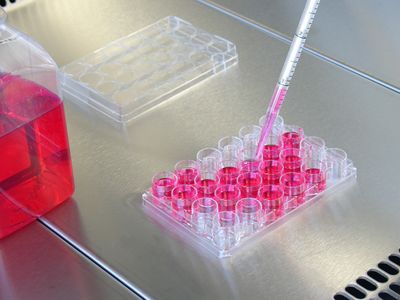To develop a new platform for studying histone modifications, North Carolina State University synthetic biologist Alison Waldman and colleagues created a speedy and cost-effective platform using baker’s yeast (Saccharomyces cerevisiae). Waldman inserted a plasmid that encoded a histone and an enzyme suspected of modifying it into the nucleus of a yeast cell. The plasmid also contained a bidirectional promoter capable of synthesizing both the histone and the enzyme simultaneously (1). Thanks to genetic tags transcribed with the mRNAs, both proteins migrate to the cell’s endoplasmic reticulum (ER), where the enzyme modifies the histone at specific residues (2). Then, thanks to a unique quality of the yeast known as surface display, the modified histone is presented on the cell’s exterior (3), where researchers can apply antibodies that label acetylation at specific residues to reveal where the enzyme modified the histone (4).

Read the full story.
Correction (September 17): A former version of this infographic showed the enzyme and histone in the nucleus. The illustration has been updated to avoid indicating that the proteins are produced there. The Scientist regrets the error.



